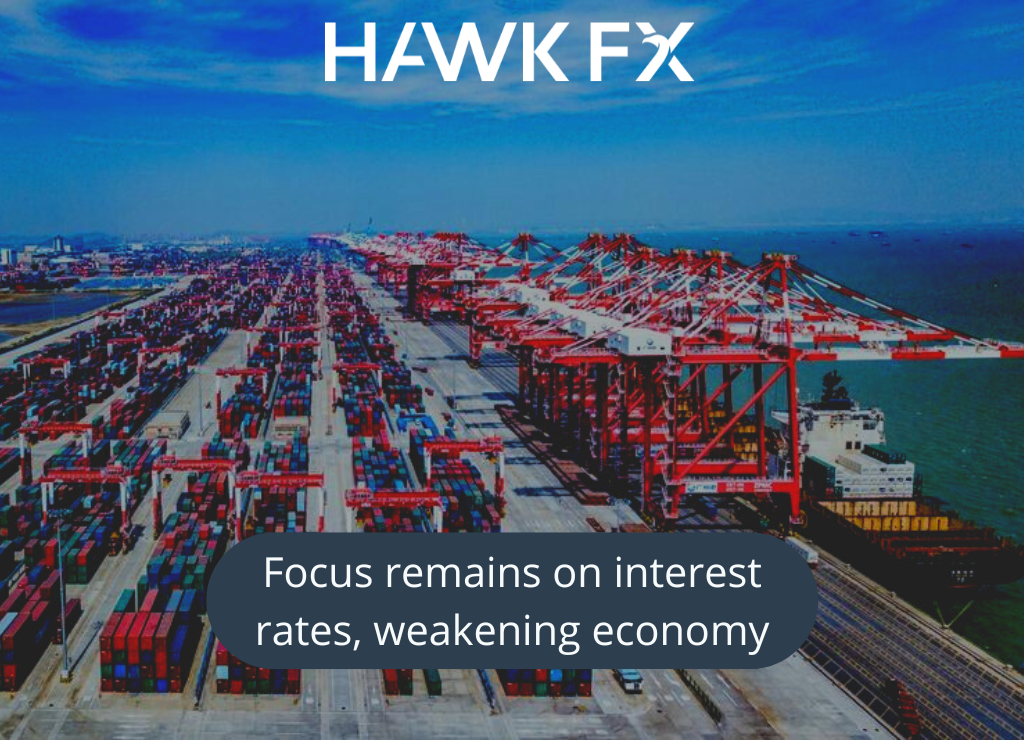
The focus across markets continues to be whether the global economy can avoid a serious downturn and achieve a soft(ish) landing. Following on from this, interest rates continue to be the number one issue. Rates are probably close to a peak across all major markets, with some countries already starting to reduce rates, as seen in China and potentially Australia next. In the UK, expectations have fallen with some seeing a peak of 5.75%, though it could be up to 6.50%. Rates are still expected to peak higher than in the US or Eurozone, mainly due to stickier inflation. The Bank of England is widely expected to raise the rate in September, though it may be a 0.25% rather than a 0.5% hike.
The wider data for the UK has been much weaker than expected with the services PMI falling below 50. This has pushed the composite PMI below 50 for the first time since January and signals a contraction across all measures, construction, services and manufacturing. Consumer confidence remains weak at -25, though this is higher than it has been.
This week, we have money supply and bank lending data for July. The money supply has been slowing for some time. This has led some to suggest that monetary policy is now too tight. The British Retail Consortium shop price index will give an early indication of inflation in August. The last two readings have produced small falls, mirroring the gradual fall in inflationary pressures.
GBPUSD – 1.2623
GBPEUR – 1.1665
The weaker data across the Eurozone has led to a fall in interest rate expectations. Last week, we saw weak PMI data from the Eurozone, mirroring that seen in the UK. With services PMI below 50 and the composite now below 50 for three months in a row, central bankers’ concerns around the economy will be increasing. Some European Central policymakers have already hinted that they may pause rate hikes at the next meeting in September. Markets only have around a one in three chance of a hike at the September meeting.
This week, the focus in the Eurozone will be the inflation figures. The August CPI will be the only inflation data between now and the ECB policy meeting. Markets expect it to fall slightly across both headline inflation (to 5.2%) and core inflation (to 5.3%). As we have seen for a number of months, this indicates gradually falling inflation, but at levels well above the ECB’s target level. This will leave a tricky balance for the ECB at their next few meetings.
EURUSD – 1.0821
EURGBP – 0.8573
The focus in the US has been similar with questions over how long the Fed will pause on rates and how soon and how quickly they will cut rates. Longer-term US Treasuries have seen the biggest moves, with yields initially rising, but then dropping back to the lowest for a couple of weeks with weaker data. The dollar has generally been stronger, with suggestions that the economy remains in good shape, despite the rate hikes. They may remain higher for longer. Rate cuts are now expected from the middle of next year, which has moved back from the end of this year.
The US is now seen as least likely to see further hikes, with Fed Chair Powell seeming to confirm that US interest rates will be left unchanged at their next policy update on 20th September. He did, however, leave the potential for further hikes and gave no suggestion of early cuts.
This week, we have a number of important pieces of data with the labour market update always key. We expect a further solid rise in non-farm payrolls of 195,000 along with unemployment remaining at 3.5%. Any change in wage growth will be closely watched and this may rise again slightly to 4.5%. Figures around these levels are unlikely to shift the Fed policymakers in favour of hiking interest rates in September. Given the previous retail sales data, this is likely to show a strong monthly rise of around 0.6%, which would be consistent with strong growth in the third quarter. The PCE deflator, which is the Fed’s preferred inflation measure is also expected to show small increases in inflation for July and will add further challenge to the Fed’s decision.
GBPUSD – 1.2623
EURUSD – 1.0821
Do get in touch if you would like to discuss this further.
*Interbank rates are correct at 7am on the date of publishing.